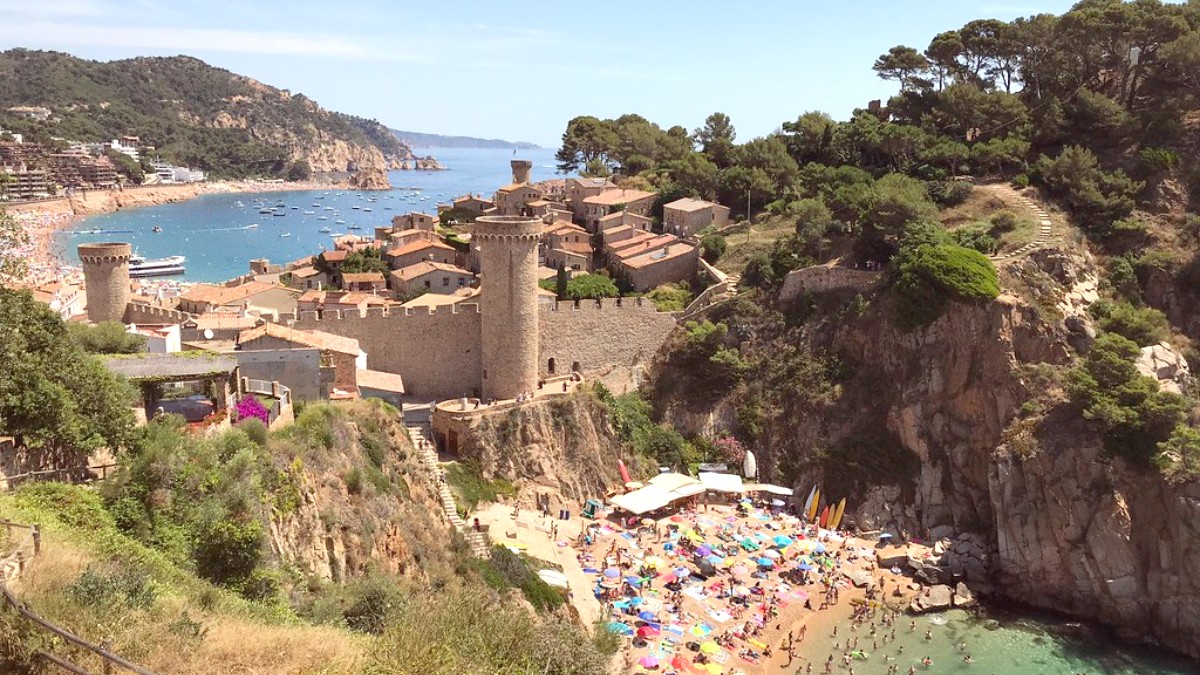
Spain
Catalan cuisine is a rich and diverse culinary tradition, part of the broader Mediterranean diet, known for its health benefits and emphasis on fresh, seasonal ingredients.
Historically, it developed from the interplay of mountain and sea produce, giving rise to the characteristic "mar i muntanya" (sea and mountain) dishes. This culinary tradition mirrors Catalonia's varied geography, from its long coastline to its fertile plains and mountainous regions. The food tells a story of the land and its people, with recipes passed down through generations.
The foundation of Catalan cuisine includes fresh fish and seafood (prawns, anchovies, cod, mussels), high-quality olive oil, garlic, ripe tomatoes, and rice.
Herbs like rosemary, thyme, and bay leaves flavor many dishes. Cured meats like fuet (a thin, dry-cured sausage) and jamón (cured ham) are also staples.
Flavors are typically robust and natural, relying on the quality of the ingredients rather than heavy spices.
A traditional fishermen's fish stew, often prepared with various local fish (like monkfish or snapper), potatoes, and a rich, flavorful sauce made from garlic, tomato, and saffron.
A local specialty, often found in traditional Catalan restaurants, especially those with a focus on fresh daily catch.
Similar to paella but made with short, thin noodles instead of rice. It is cooked in a wide, shallow pan, typically with seafood (prawns, mussels, squid) and often served with alioli (garlic mayonnaise).
Find it in most seafood restaurants along the beachfront or in the town center.
A refreshing cold salad made from shredded salted cod, tomatoes, onions, peppers, and olives, dressed with olive oil and sometimes a touch of vinegar.
It is perfect for a light lunch, especially in warmer weather.
Tossa de Mar features limited traditional street food. Find portable snacks like churros (fried dough pastries, often served with chocolate) and ice cream from vendors along the promenade. Small bakeries and cafes feature sandwiches (bocadillos) and pastries for quick, inexpensive meals.
Crema Catalana: Catalonia's version of crème brûlée. This creamy custard features a caramelized sugar topping, often flavored with lemon or cinnamon. Panellets: Small, dense almond pastries, popular around All Saints' Day. Turrón: A type of nougat, popular during Christmas. Mel i Mato: Fresh mató cheese served with honey.
A few upscale restaurants in Tossa de Mar focus on refined Catalan cuisine and fresh, high-quality seafood.
These are abundant along the beachfront promenade and in the town center. They feature a mix of traditional Catalan, Spanish, and international dishes.
For budget-friendly meals, look for small cafes, bakeries (panaderías), and bars. They feature sandwiches (bocadillos), pastries, and coffee.
Vegetarian and, increasingly, vegan options are available, especially in larger restaurants. Many traditional Catalan dishes are meat or fish-based, but salads, grilled vegetables (escalivada), and rice dishes can often be adapted.
It is helpful to learn phrases like "Soy vegetariano/a" (I am vegetarian) or "Soy vegano/a" (I am vegan) and "sin carne" (without meat), "sin pescado" (without fish), "sin lácteos" (without dairy), "sin huevos" (without eggs).
Halal and kosher options are very limited in Tossa de Mar and are mostly found in larger, multicultural cities like Barcelona. Travelers with these dietary needs should plan to self-cater or research specific restaurants in advance.
Always communicate clearly with restaurant staff about your needs.
Awareness of gluten-free (sin gluten) is growing. Many restaurants cater, but communicate clearly.
Always declare all allergies to staff. Cross-contamination might occur in smaller kitchens.
Carrying a Travel allergy card in Spanish/Catalan is recommended.
Apps like HappyCow (for vegan/vegetarian) pinpoint suitable dining establishments.
Supporting local family-run restaurants, visiting the weekly market, and purchasing goods from independent shops in the Vila Vella or Sa Roqueta contribute directly to the local economy and foster community engagement.
This provides a genuine connection with local life and traditions.
Occasional sardana (traditional Catalan circle dance) performances may occur in the town square during summer evenings or local festivals. These give a glimpse into Catalan folk culture.
Check local listings for specific dates and times.
Many restaurants capitalize on Tossa's beautiful setting, featuring outdoor terraces with sea or castle views.
Some traditional masias (Catalan farmhouses converted into restaurants) in the surrounding countryside foster an authentic rural dining experience.
Embrace the late dining hours; it is part of the local culture. Many restaurants open for dinner after 8 PM.